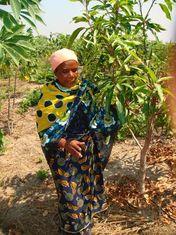
A project funded by the international financial organisation Common Fund for Commodities (CFC) is boosting smallholders in Tanzania and helping them grow mangoes for export to the fresh produce markets of the EU.
Caleb Dengu, who leads the financing of the project from CFC headquarters in Amsterdam, said: “We are putting up $1.9 million (£1.16m) and a further loan provision of $2m organised through the African Development Bank and the Industrial Development Corporation of South Africa (IDCSA). Our major focus with the out-grower scheme is fresh fruit for export, but the IDCSA is providing the loan element for industrial plants, so that the fruit that does not make the grade for fresh exports can be processed.”
A range of different mango varieties are being grown in the most appropriate regions of the country: Pwani, Zanzibar and Tabora.
Remen Swai is project manager for the out-grower scheme in Tanzania. He said: “We are encouraging farmers to grow a wide range of mango varieties to meet requirements of different markets, customers and processing plants. The most common varieties include Tommy Atkins, Apple, Palmer, Keitt, Kent, Alphonso and Keisal. Others in smaller volume are Red Indian, Zill, Maya, Sensation and Kensington.”
Some 600 growers have been selected for the project. Dengu said: “We want each grower to have 160 trees on one hectare each. We have established links with larger growers to support the project but our aim is to help small out-growers. If this works with the first 600 growers, we will bring in another 600 growers so that we have a maximum of 1,200 involved, growing on 1,200ha.”
Trees are already going into the ground and private nurseries have been used, as the smallholders did not have the capacity to produce the seedlings.
“Our model is a form of contract growing,” explained Dengu. “All inputs are being strictly supervised. We hope to have our first fruit in three years’ time and to reach full production in four to five years.”



